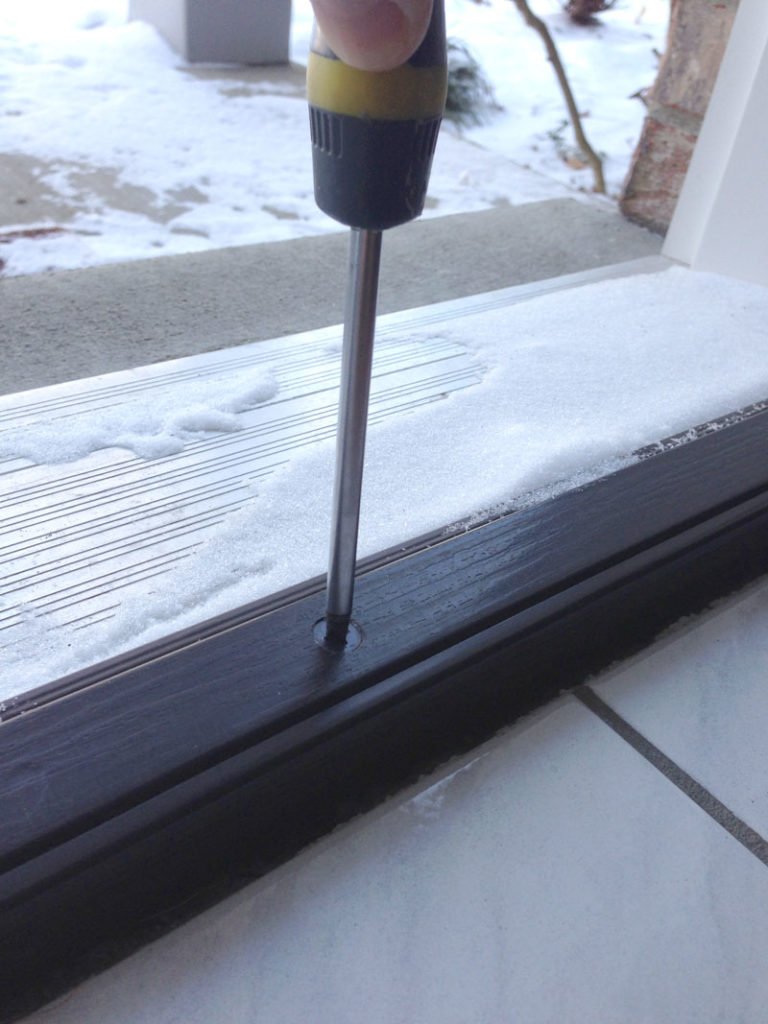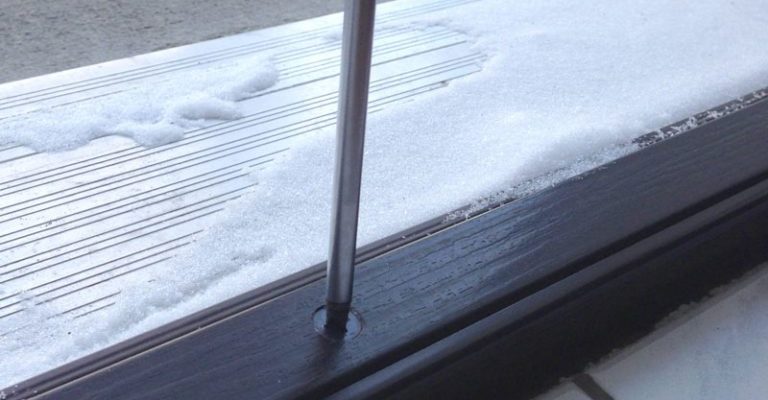
Exterior door hardware is supposed to keep homes secure and weather out. But when the temperature dips, even the toughest hardware can turn unreliable. It doesn’t matter if your lock is smart, basic, old-school, or fresh from the hardware store—cold weather can make everything stick, stiffen, or freeze up entirely. So, what’s behind this sudden refusal to cooperate, and what can you actually do about it? Let’s break down why your door hardware throws a fit in freezing temperatures and how you can get ahead of the problem.
What Happens to Door Hardware When It Freezes?
Here’s the thing: exterior door hardware—think handles, locks, deadbolts—faces all the elements head-on. When temperatures drop, the metal and moving parts inside these devices react to the cold, sometimes making them stick or jam. It’s a bit like how your fingers don’t quite move the way you want after spending too long out in the cold—metal contracts, lubricants thicken, and moisture can sneak into tiny gaps.
The most noticeable issue is usually a sticking key or handle. If you try to turn the key in a cold lock, it might feel like it’s caught on something. Sometimes, the lock just won’t budge at all. That’s often because water vapor from the air gets inside the mechanism and freezes overnight, locking things up (pun very much intended). Even modern brands like Yale or Emtek aren’t immune.
In addition, cold weather doesn’t just stiffen up moving parts; it can also shrink the hardware itself. Metals contract in freezing weather, so tiny clearances get even tighter. That means springs, pins, and tumblers inside your lock can seize up, requiring a lot more force—or sometimes refusing to move entirely. This is especially common in areas that see sudden temperature swings.
Why Moisture Is the Real Enemy in Freezing Weather
Let me explain the moisture piece, because it’s sneakier than most people think. Even when it’s not raining or snowing, water vapor is everywhere. If you open your door on a damp day, moisture can creep inside the mechanism. When temperatures drop at night, that trapped water turns into ice crystals and jams up the moving parts.
You might be wondering, “But my door lock looks sealed—how is water getting in?” The answer is that locks have tiny tolerances on purpose. That’s how a key fits so perfectly and how pins and springs inside the lock function. Unfortunately, those same microscopic spaces allow humidity or direct water (like melting snow) to slip in. When this freezes, the metal inside can literally fuse together until things thaw out.
Some people try to warm up the hardware with a hair dryer or pour hot water on the lock. Word to the wise: it’ll work for a minute, but you’re actually introducing even more moisture into the equation, which can freeze again later. It’s better to deal with the root cause.
How Lubricants React to Cold Temperatures
Here’s a detail folks often overlook: lubricants are meant to keep everything moving smoothly, but when it’s freezing out, they can do the opposite. Many door locks (especially on brands like Baldwin or Defiant) are lubricated with oil-based products. When the mercury dips, those lubricants thicken up like refrigerated honey, making it much harder for springs and tumblers to move.
What happens if you used the wrong lubricant? Sometimes, homeowners try WD-40 or a similar spray to “fix” a sticky lock. The problem is, those lubricants can attract dust and, in the cold, get gummy. Graphite powder is often a better option because it doesn’t freeze, gum up, or collect debris. But if your lock already has old oil in it, graphite might not help until you clean it out first.
So if the lock feels tight even after a thaw, the culprit might be old or congealed lubricant inside the case. You can’t always see it, but it’s there, making everything sluggish. Regular maintenance before deep winter hits is key, but I’ll get to solutions in a bit.
Door Alignment and Warping as Temperatures Drop
It’s easy to blame the lock, but sometimes the real problem is the door itself. Here’s why: most exterior doors (wood, fiberglass, even steel) expand and contract as the weather changes. In freezing weather, materials shrink, and this can pull hardware slightly out of alignment.
Picture this: your smart lock from August or basic Schlage deadbolt worked fine in the fall. But one subzero night, the key won’t turn or the handle feels stuck. Often, the doorframe has shifted just enough that the bolt can’t slide into its receiver smoothly. Even a millimeter of misalignment means you have to force the lock to work, which can stress the hardware and even break internal parts.
If you notice the door dragging or sticking, check the top, bottom, and sides. Cold air can warp or contract the frame, causing everything from stiff hinges to completely stuck doors. That’s why you sometimes need to push or pull the door hard before you can get the lock to turn in winter.
Common Types of Hardware Issues in Freezing Temperatures
When exterior door hardware sticks in cold weather, it can show up in a bunch of ways. Here are the problems most people notice:
- Key won’t turn: The lock cylinder is probably frozen, or the tumblers are stuck. Sometimes you’ll snap a key trying to force it—don’t ask me how I know.
- Handle or knob feels stiff: The moving parts inside are contracting, or ice has formed between metal surfaces.
- Deadbolt won’t slide: The bolt or the door may be out of alignment, often due to shrinking door materials or frozen weatherstripping.
- Smart lock won’t operate: Cold can sap battery power or prevent the motor from moving properly. Some locks may give a low battery warning even with fresh cells.
- Lock won’t reset or pair: Electronic locks (like Yale, Schlage, or August) can glitch in freezing weather if the internal electronics are affected by cold or condensation.
You might see one or more of these, especially as temperatures jump back and forth near freezing. The symptoms can vary not just by brand, but by the age and type of your particular hardware.
How to Prevent or Fix Sticking Door Hardware in Winter
So, how do you stop your door hardware from sticking when it’s freezing out? Here are some steps you can take—even if you aren’t a DIY pro:
- Apply the right lubricant: Use graphite powder or a silicone-based spray, never oil-based products, to avoid gumming up the mechanism. For locks that already have residue, clean out the old lubricant with a cotton swab or compressed air before applying new.
- Seal out moisture: If you live somewhere damp or snowy, check the weatherstripping and threshold to block moisture from seeping inside the hardware. A simple silicone bead along the edge can make a difference.
- Keep the keyhole covered: Some locks come with flaps for this reason. If yours doesn’t, consider adding a simple outdoor lock cover to keep rain, snow, and humidity out.
- Check door alignment: Adjust loose hinges and make sure the strike plate and deadbolt line up. If the door scraped the frame after a cold snap, tightening hinge screws or shimming the plate may help.
- Warm gently if necessary: If you must thaw a frozen lock, use a lock de-icer or a warm key (run it under hot water, then dry it thoroughly) rather than pouring hot water on the hardware.
- Replace hardware if needed: In some cases, especially with older, corroded locks, it’s best to upgrade to new exterior hardware rated for low temperatures.
Honestly, regular maintenance before the deep freeze begins is your best bet. Give the lock a thorough cleaning and lubrication in late fall, and check for leaks or misalignments before ice and snow set in.
Are Some Door Hardware Brands or Types Better in Cold Weather?
You might be wondering if certain brands or types of exterior door hardware handle freezing temperatures better than others. The answer is yes, but even the best brands have limits. For example, Kwikset, Schlage, and Yale all make locks specifically designed for outdoor use, with weather-resistant finishes and tighter tolerances.
Smart locks (like August or Wyze) introduce extra risk: batteries lose power faster when they’re cold. Some also have motors that struggle to move frozen bolts if the door is out of alignment. If you rely on keyless entry, consider a backup mechanical key or code entry in case the electronics glitch out.
When choosing hardware, look for:
- Weather-resistant ratings: Products labeled for exterior use are built to withstand more abuse, including cold, moisture, and salt air.
- Solid metal construction: Brass and stainless steel perform better in extreme temperatures than cheaper pot metal or plastic parts.
- Well-sealed enclosures: This keeps ice and moisture out of the moving parts so you don’t have to troubleshoot as often.
Still, even the toughest lock can stick if it’s not installed well, so getting the basics right matters more than splurging on a fancy brand.
Comparing Universal and Brand-Specific Hardware for Cold Weather
Let’s talk about universal versus brand-specific hardware. Universal locks and handles are meant to fit a wide range of doors, but sometimes their looser tolerances actually let in more moisture or draft. That means more opportunity for freezing and sticking.
Brand-specific hardware—like a Kwikset lock for a Kwikset-prepped door—usually fits with less “wiggle room.” That tighter fit can help resist cold, wind, and moisture, making sticking less likely. Of course, nothing’s perfect, and if you need to reset, sync, or troubleshoot a digital lock, cold weather can still cause unexpected glitches no matter who makes it.
If you’re replacing hardware, it’s worth matching the brand to your door’s prep if you want the best shot at trouble-free operation in winter. But honestly, proper installation and care matter more than whether you go brand-name or universal.
The Bottom Line: Keep Your Door Hardware Moving This Winter
Living with exterior door hardware that sticks in freezing temperatures is a headache no one enjoys—especially when you’re standing outside, juggling groceries or just trying to get inside where it’s warm. Cold weather throws everything at your hardware: metal contracts, lubricants thicken, moisture sneaks in, and door frames shift. Even top brands like Schlage, Kwikset, or Yale aren’t immune.
The good news? With the right maintenance, smart hardware choices, and some simple weatherproofing, you can avoid most winter hardware woes. Remember to check for moisture, keep your locks clean and dry, and don’t be afraid to upgrade if your old lock just can’t handle another freeze. Stay one step ahead of the cold, and your door hardware—no matter the brand—will thank you with smooth, reliable operation all year round.
